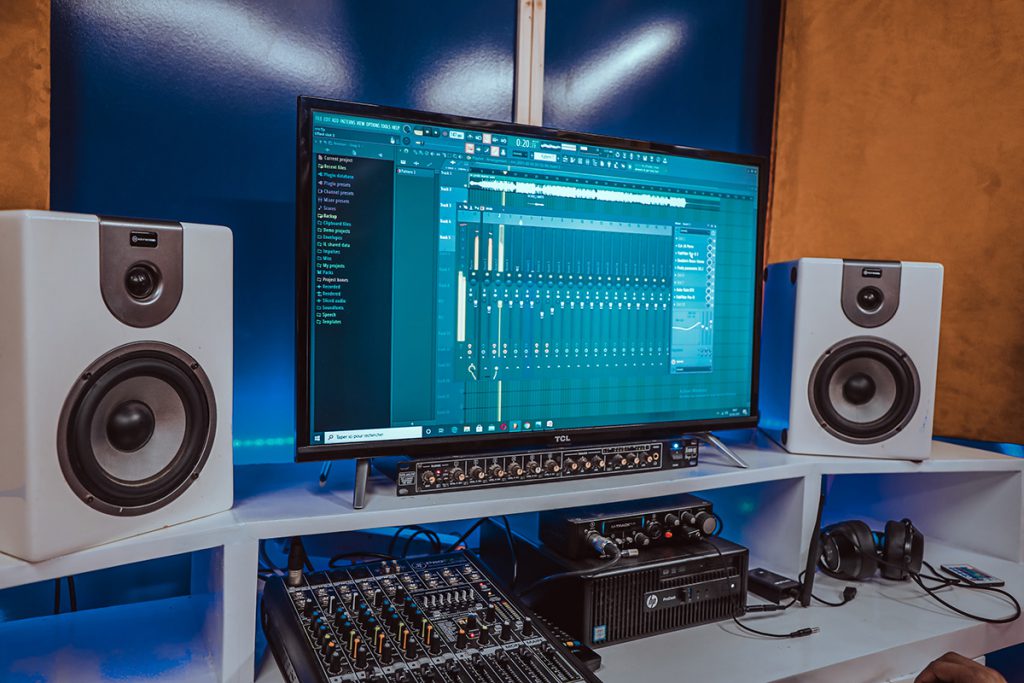
Here at Laurus College, we have several program-specific clubs. These clubs allow instructors to present additional information, critique student projects, and offer extracurriculars such as guest speakers. The Audio Video Production Club connects real industry issues and skills with students who have a passion for taking their craft to the next level.
AUD110 And Garage Band
Many of our students have never worked with audio files before. In our introductory AUD110 course we start students off using a program by Apple called GarageBand. This is an amazing program that allows you to use virtual instruments and sound loops.
In GarageBand, we work a lot with midi files which are like scrolls on old player pianos. The files have different tracks that represent different instruments. We can use these tracks to mute instruments, manipulate sound, control tracks, and even move instruments around. GarageBand even allows you to change which instrument plays which track. For example, you can change a Steinway piano to an upright.
How Do We Experience Film?
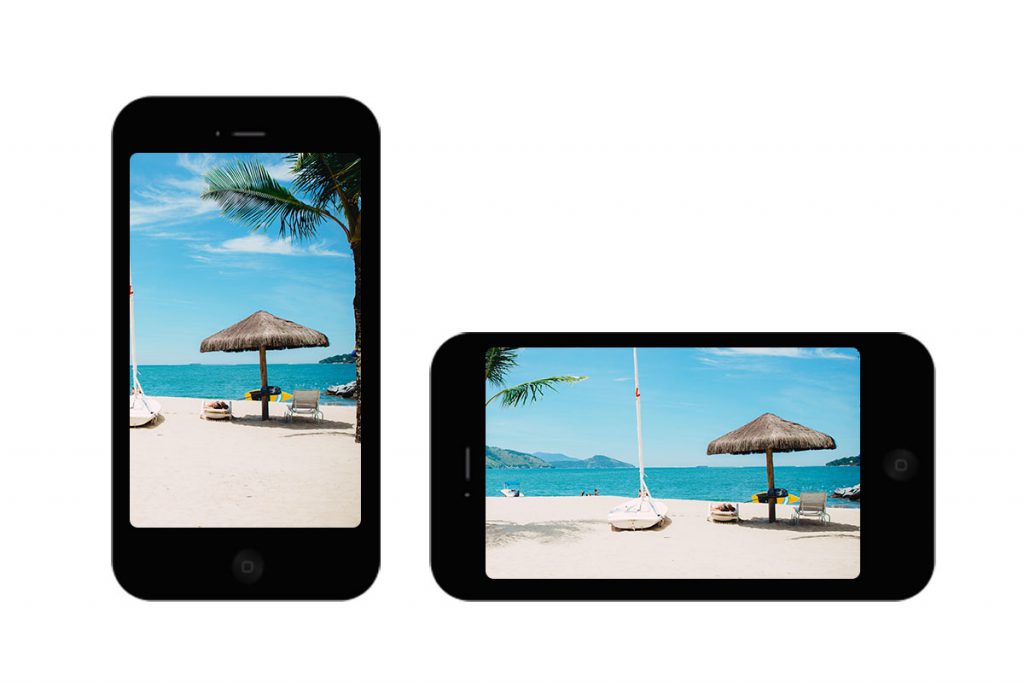
Vertical vs Horizontal
These days lots of people experience film and video through handheld devices. In 2022, 71% of people aged 18-34 are watching online video content at least weekly on their smartphone.
I would show both vertical and horizontal aspect ratios to my students when I taught film school and I would ask them, which is better? We used to make fun of filmmakers who shoot vertically, but in time I’ve come to have a great deal of respect for it.
That video was created in 2014 and things have changed. I noticed when Justice League came out the production company made square trailers that could be watched the same in either format.
It turns out that square video (1:1) has 30-50 percent more views than landscape videos do on social media and people watch vertical videos an average of 1 minute longer than they do horizontal ones.
The reason for this is simple, comfortability. It’s just easier to hold a phone vertically. Users hold their phones vertically about 94% of the time. Many social networking sites such as TikTok, Snapchat, and Instagram have gone with vertical video and images for this reason alone.
Aspect Ratios
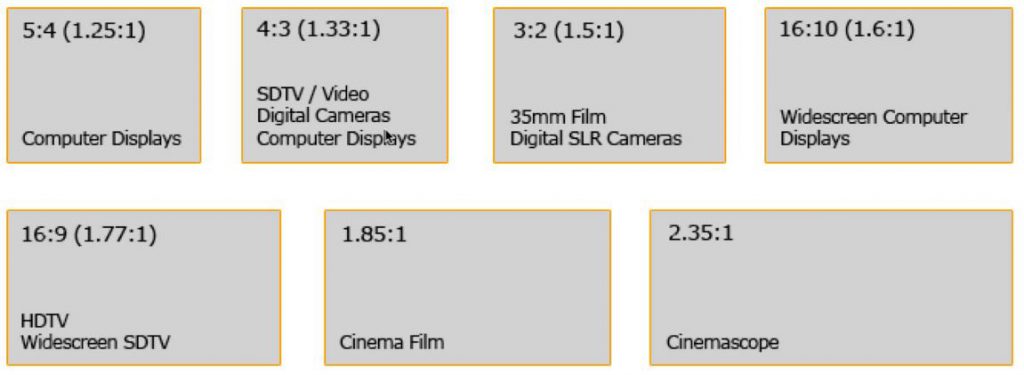
The correct aspect ratio of a film depends on the intended audience, so there isn’t a clear answer.
The aspect ratio of films has changed over time. When television became more popular in the 1950s, people stopped going to the movies. In response, theatres and studios created the Cinemascope aspect ratio for these huge screens, and it worked!
Transferring films from wide cinema screens to home televisions requires cropping. This was a lot more noticeable before the turn of the century because the aspect ratio of home televisions was so much different from theatres.
Even today aspect ratios are in flux. Justice League, for example, was filmed and presented in the 4:3 aspect ratio to fill an IMAX screen. They intended to crop the upper and lower portions for regular movie theatres. When it was re-released as the Zack Snyder Cut, it was presented in the original 4:3 aspect ratio.
All About Podcasting
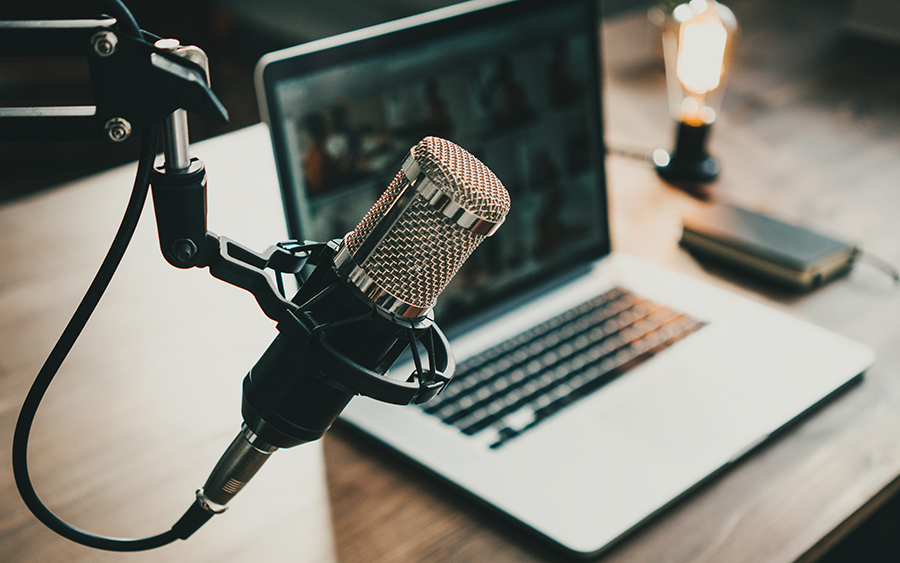
In the last meeting, we had a great presentation by Ahmad Rashad on podcasting and I wanted to add a little bit more to that.
Podcasting is a great platform if you have something to say and would like to share your message with the world. Unlike traditional radio, podcasts are available on-demand and available to your audience 24/7. Compared to other platforms it allows an intimate connection with your audience. The best part is that they are free to create and free to listen to.
Recording equipment for podcasting is relatively cheap and there are free tools for recording such as Audacity or GarageBand. With Spotify’s 2019 purchase of the podcasting app Anchor, distribution tools are also free.
Get clear on your ideal listener

Art can be very cathartic, and artists have a duty to be true to themselves. Still, if you want anyone to listen to your podcast, you need to think about who is gonna listen to it. Identify the audience you want to reach ahead of time and create content that the audience is interested in.
Who are you talking to and why? Like a business owner wants to determine their ideal customer, you need to figure out that one perfect person is with whom you want to share your message.
- Is this listener male or female?
- What age group do they fall into?
- Are they self-employed, an employee, unemployed, etc.?
- What’s their social life like?
- What are their hopes, dreams, and challenges?
- What would they want to know about the topic of your podcast?
Elements to consider if you want to Podcast
Commit to same time & Length-Consistency. If you can commit to one hour a week, make sure you don’t skip a week. When Monday morning hits, your audience is going to wonder where your audio is.
Pick a topic that lends itself to audio storytelling. Be sure to choose a topic that has a natural community and connects to that community.
Clear Topic. Is this a topic that’s clear and understandable?
Fan-dom. Are there enough people interested in your topic?
Good, Clear Audio. No one wants to listen to a podcast that sounds bad. If you don’t know how to produce, get someone to do it for you.
Build your Audience. It’s not going to happen right away but be patient. You’ll get the majority of new listeners from social media mentions or appearances on other podcasts. Try reaching out to people you know to be guests on their show.
Engage with your audience. Give them space to engage with you. Consider setting up emails, tweets, direct messaging, or another way for your to contact you and incorporate that into the show.
Duo or Solo Hosting
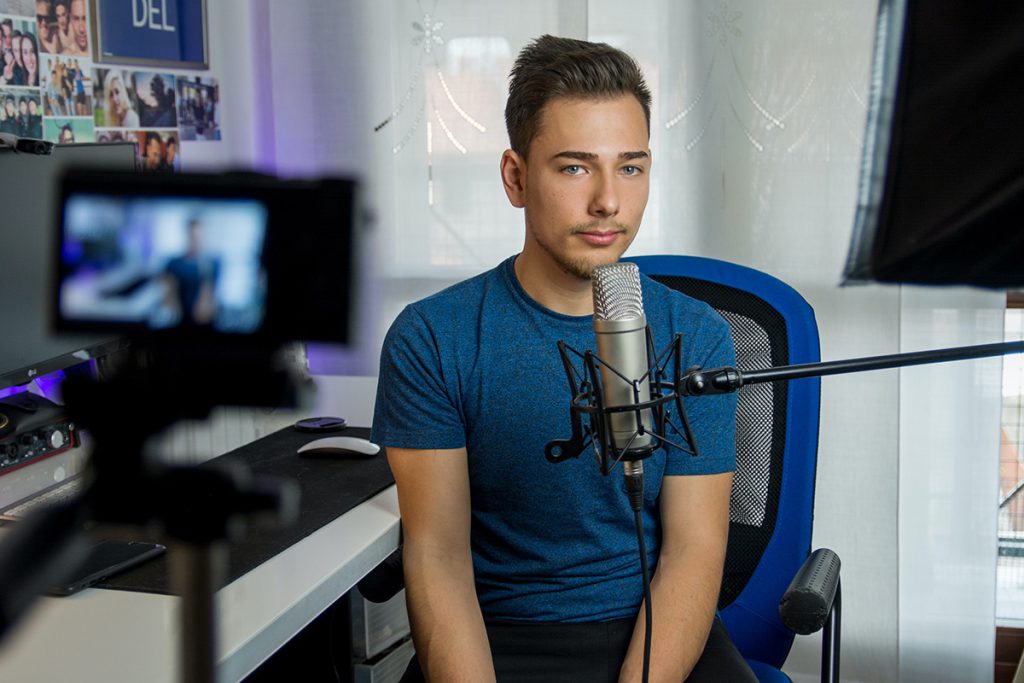
I think two hosts generally make for more interesting discussions. I come from Chicago and grew up listening to Steve and Gary in the morning. When Steve lost Gary they lost a lot of listeners. Howard Stern just wouldn’t be the same without Robin.
Ahmad Rashad had this to say on the topic of duo vs single hosting:
“It depends on the nature of your show. If you’re looking to be the expert in your field I advise it to be a solo program. This allows the host to be the expert and eventually bring in guests. Usually the first 10 episodes I have them run their show as a solo host before bringing on guests. When you have more than one person on the show now you’re sharing that spotlight. Now the podcast listener is more listening in on a conversation so you lose that the host is the expert.”
“If you have multiple people you want to make sure each of them has a role. For example, I have a group of life coaches and they want to do a show together. Each of them takes a role as an expert in something unique so there is still that differentiation. “
Short Film: Cargo
I judge a film in the most basic way of “was I ever bored,” and I was never bored with this. I was always engaged, it always kept me going. I show this film to classes because it’s just a couple of actors and doesn’t include a lot of special effects or makeup. Instead, they use a lot of very creative film techniques. Still, the video has racked up over 10 million views and is a great example of what you can achieve with even a small group.
Laurus College Audio Video Production Program
The Laurus College Audio Video Production Program allows students to develop skills in audio and video recording, editing, and production by introducing them to the techniques and methods of working with sound and video.
Laurus College offers a 48-month* Bachelor of Science Degree program in Audio Production and a 24-month* Associate of Science Degree program in Audio Video Production. Our programs are designed to provide the practical training, technical skills, and industry support it takes to excel in the Audio Video Production world.
